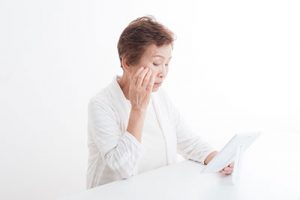As we age and our sleep patterns naturally change, we can see some unexpected side effects. The quality and quantity of a person’s sleep have a direct effect on his or her health, including the condition of the skin. Just like the rest of the body as we grow older, aging skin needs a little extra TLC to stay healthy. To keep skin healthy and youthful-looking, catching Zzz’s is more important than you may realize!
The problem with not sleeping enough.
Sleep deprivation – not getting enough sleep – has been clinically linked to premature aging. A study at University Hospitals Case Medical Center found that participants who didn’t sleep enough had “increased signs of skin aging.” Not only that, their skin also took longer to recover from environmental stressors like UV light or cracks and cuts on the skin. The body repairs itself while we sleep. If you’re not getting enough sleep, or not getting enough good quality sleep, then your body is not able to fully recover, resulting in signs of stress like slow healing, dryness, and wrinkles.
Not getting enough sleep can also raise your levels of cortisol – the stress hormone. Cortisol is a nasty bugger that can cause all kinds of issues. It’s been shown to break down collagen, which is the protein in our bodies that helps keep skin tissue taught and youthful.
 You get the picture: without enough good sleep skin looks older and heals slower. Luckily, there are steps you can take to improve the quality of your sleep and reap the benefits for your aging skin. Here are 5 ways to get better sleep as you get older.
You get the picture: without enough good sleep skin looks older and heals slower. Luckily, there are steps you can take to improve the quality of your sleep and reap the benefits for your aging skin. Here are 5 ways to get better sleep as you get older.
1. Get enough sleep.
Make sure you’re getting the recommended 7-9 hours of sleep each night. Everyone’s body is different, so you may need a little more or less. Try not setting an alarm clock for a few days and see what time you naturally wake up. That should tell you how much sleep your body truly needs. Aim to get that amount every night.
2. Stick to a bedtime.
Our bodies like habits. Getting to bed around the same time every night will create a pattern that makes it easier for you to fall asleep quickly and stay asleep. Try to go to bed and wake up at the same time each day – even on the weekends!
3. Practice good sleep hygiene.
What’s sleep hygiene? Glad you asked! Sleep hygiene refers to best practices to improve the quality of your sleep. Avoiding things that can interrupt your sleep like long naps during the day and caffeine in the afternoons are part of good sleep hygiene. Having a pre-bedtime routine will also help you wind down so your mind and body are relaxed and ready for sleep. For example, you could turn off your screens (TV, phone, etc) 30 minutes before bed, drink a cup of non-caffeinated herbal tea, and spray your pillow with a lavender mist before hitting the hay. The idea is to cultivate a ritual that lulls your body into dreamland.
4. Get some sunshine.
Sometimes not getting enough sunlight can throw off our natural circadian rhythms, which tell the brain when to be awake and when to go to sleep. Open the curtains and let the natural light into your home. Go outside for a walk during the day (don’t forget the sunscreen!). Let the light in so your body can appreciate the difference between day and night, and you can get sleepy at the right time.
5. Stay active.
Whether you’re sitting at a desk all day, or you’re less active in retirement, a lack of physical activity can negatively affect the quality of sleep. Simple activities like walking, gardening, or riding a bike can not only improve how well you sleep but also how long you’re able to stay asleep.





